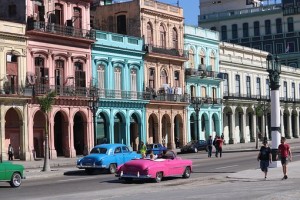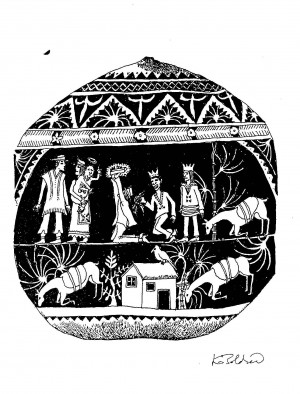Cuba – A tourist paradise and a land for challenging economic opportunities
By Tamás TÓTH, Ambassador, Secretary General of the Hungarian-Latin American Association (LATIMO)

If you’re a regular news reader, you probably come across the name of Cuba more and more frequently. The articles cover topics like the future of the American-Cuban rapprochement process that started under the presidency of Barack Obama (and now meets difficulties under the Trump regime), or the agreement between the European Union and the island country concerning economic cooperation. And of course, Cuba is always present in the news as a beloved tourist destination. Besides acknowledging the country’s natural beauty and unique atmosphere, those interested in the Caribbean area and the Latin American region might be wondering whether or not we can count with Cuba from an economic point of view.
When hearing the name of Cuba, most people associate with the tourist paradise which is kept count of as the pearl of the Caribbean. And they have every right to do so, because the island country as big as Hungary is a perfect destination in all seasons. Most days of the year are characterised by 7-8 hours of sunshine, so you don’t have to worry about rain washing away your programmes – except for hurricanes on rare occasions. Much to the delight of beach lovers, more than one thousand further islands belong to the biggest island of the Greater Antilles, which all shine with intact beauty.
One of the most interesting sights in the country is the capital city. The lovely central quarter of Old Havana and its Spanish colonial architectural monuments either glow with sunshine or show their after-rain beauty – a unique spectacle that can’t be seen anywhere else. The city centre of Havana, which forms part of the UNESCO World Heritage, captivates everyone even if only the most frequented streets have been renovated in the past years. The El Morro fortress, a natural formation that guards the bay of Havana at the sea-gate, is a peculiar spectacle, just like the Capitolio designed after the one in Washington, and the Malecón, an eight-kilometre-long “U” shaped bay. After exploring the city centre, head to the seacoast and keep walking until you reach the zone of beautiful, old colonial mansions and their centre, Quinta Avenida. The nicely renovated buildings are home to diplomatic representations, while the neat promenade in the middle of the avenue is used for sport activities by the local youth.
Naturally Cuba is lot more than Havana and Varadero, the popular centre of mass tourism. If you really want to get to know the country, you should opt for the still intact islands of the Caribbean Sea to experience their matchless colour, visit the famous tobacco plantations of the Vinales Valley, take a hike in the national park rich in flora and fauna in the Sierra Maestra Mountains, go boating on the underground rivers or visit the magical island mountains of the Pinar del Río province.
Cuban people are usually friendly, open and curious. From a Hungarian point of view, this is especially true for the older generation, who still remember the prestigious Hungarian products which were mostly present in Cuba back when our political systems were similar. Many people remember the Hungarian light bulb, wines, meat products, the onetime famous canned food and even the logistical products in the harbour. What’s more, you can still encounter buses produced by Hungarian companies. The memory of the onetime excellent Hungarian industry is also guarded by the shops since their selection is still simple and many products are still short in supply. And even though some sectors – like the always developing tourism – improve the financial situation of certain social layers, the general purchasing power is still weak.
Knowing all this, visitors who know a bit about business rightly wonder whether or not Hungarian enterprises have realistic chances of marketing their products or services in Cuba, or to have a go at serious investments.
Hungarian enterprises wishing to invest their capital in Cuba or trade with the companies of the island country have to be aware of the country’s economic situation, the regulations and the existing trade customs.






